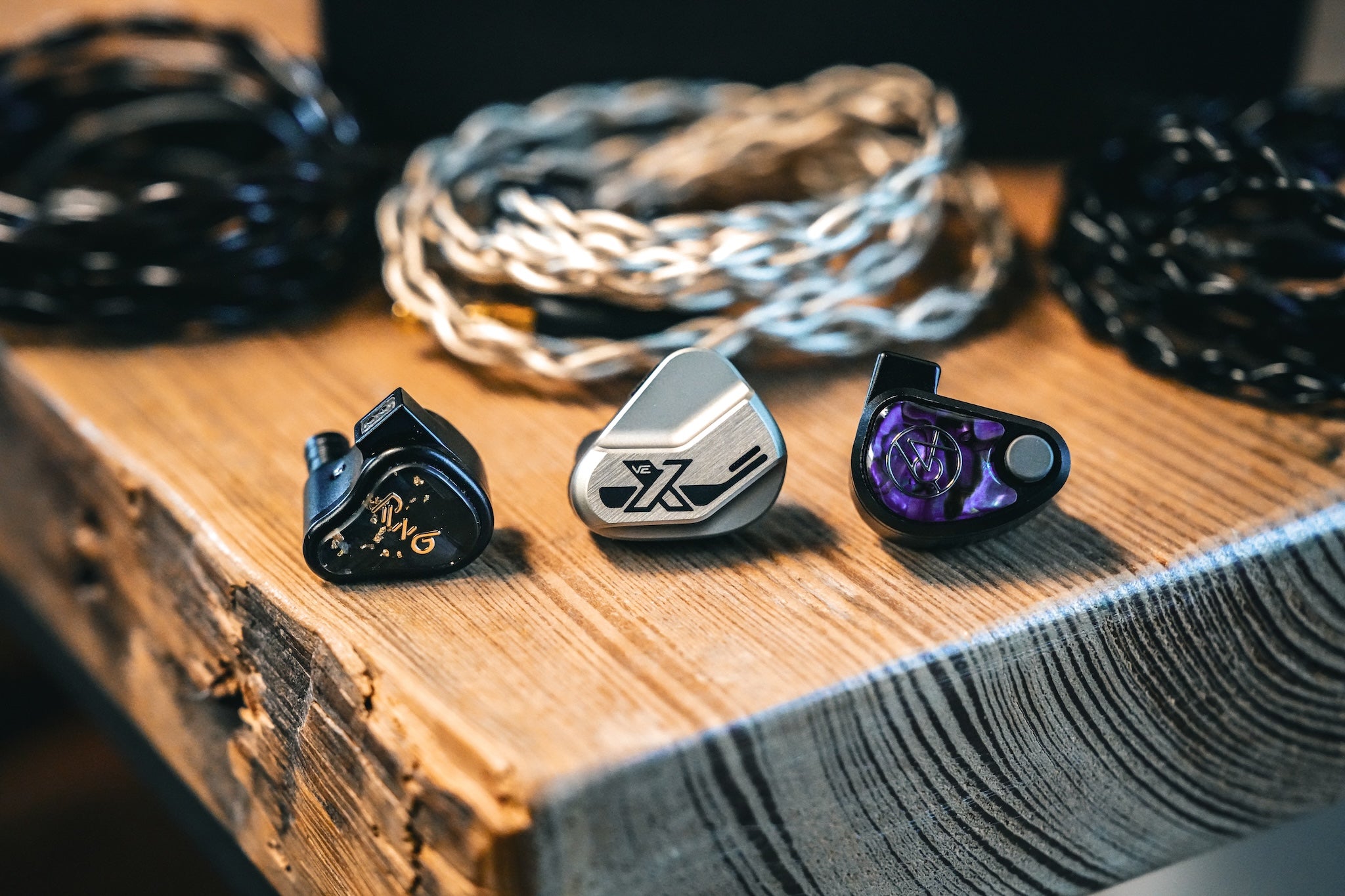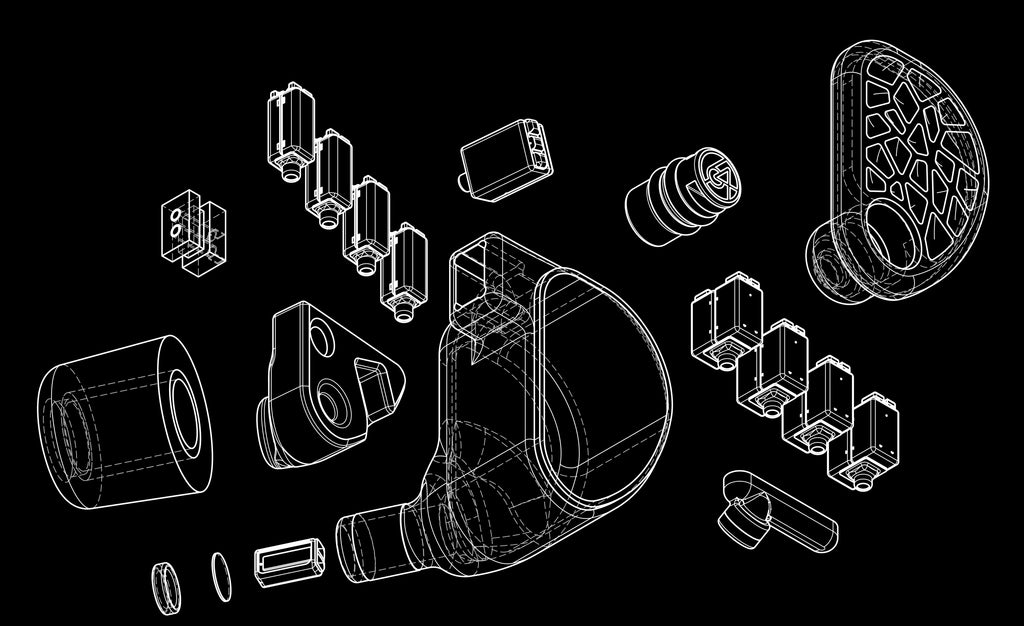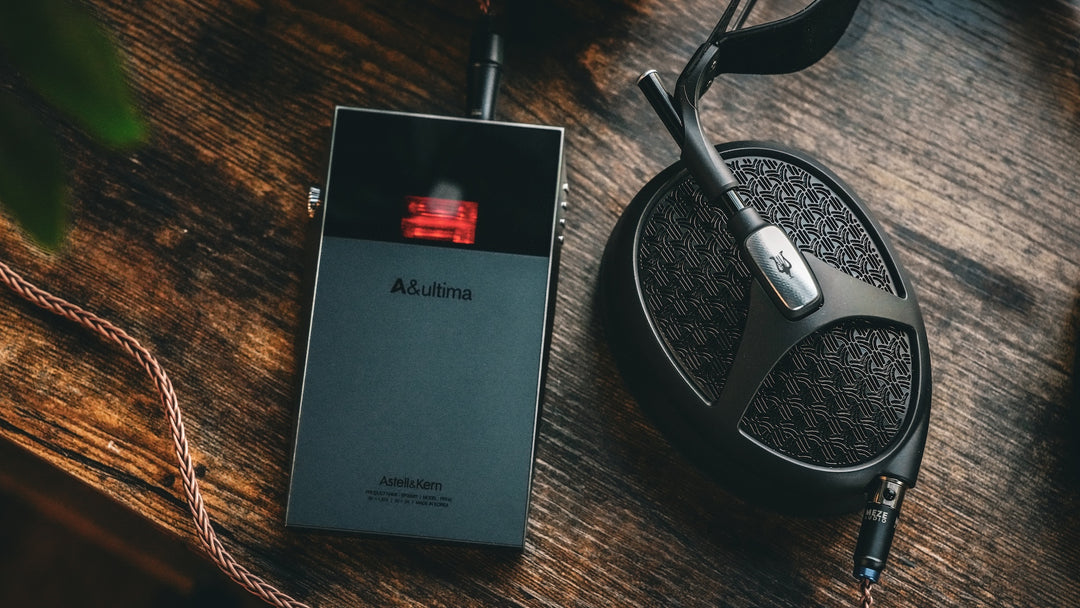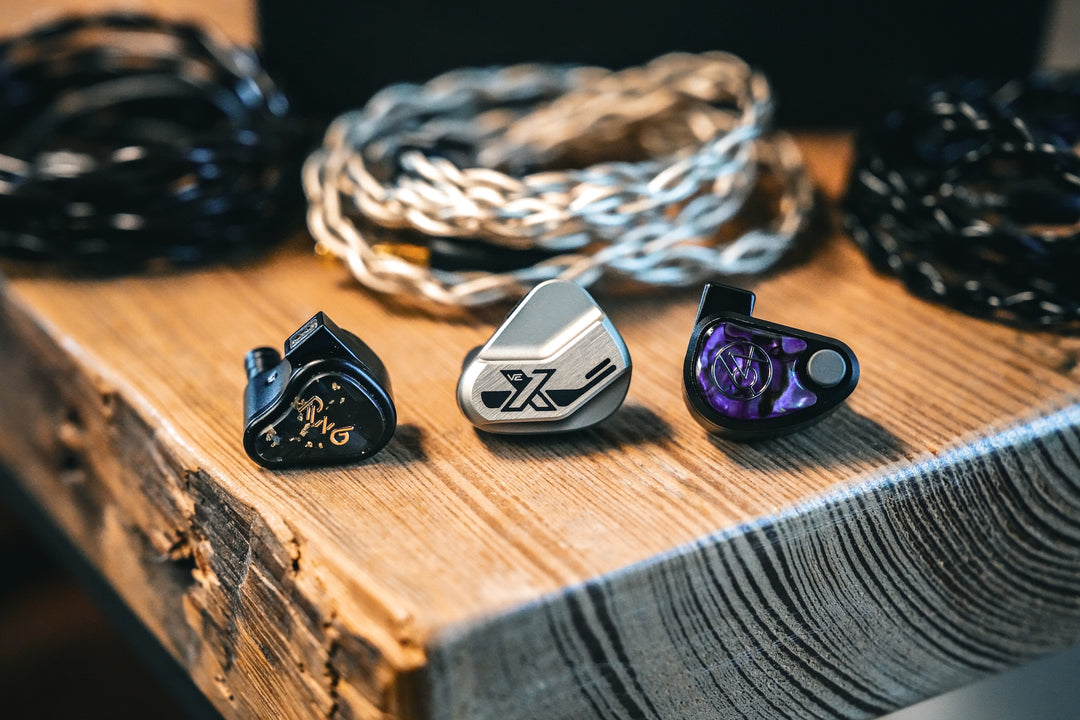If you’ve been shopping for IEMs, you’ve probably noticed that there are a lot of different options for drivers: different quantities, different types, and different combinations. While the majority of over-ear headphones still use the familiar dynamic driver, and only an extremely rare few use more than one driver, IEMs all-across different price ranges use different kinds of drivers and combinations. But what’s the difference between all the different types? And why do you need more than one driver per side anyway?
What’s the Difference Between IEM Driver Types?
First of all, what even is a driver? A driver, or transducer is composed of a magnet, voice coil, diaphragm, and suspension. The coil and magnet transmit the electromagnetic signal into the diaphragm, which moves to generate sound, and the suspension keeps the diaphragm in place. IEM drivers are essentially the same as the drivers you find in headphones or speaker systems, but shrunk down to fit inside your ears. There are five types that are commonly used in IEMs: dynamic, balanced armature, electrostatic, bone conduction, and planar magnetic.
Dynamic Drivers
Dynamic drivers (DD) are the most commonly used drivers in consumer headphones, and they’re featured in a large number of IEMs as well. Dynamic drivers can cover the full frequency spectrum with a single driver, and are generally considered to be the most natural and lifelike sounding drivers. DD are the gold standard for bass in IEMs, but their response can be slower than other driver types.
The driver itself is made of a conical diaphragm made from paper or cloth (often with a special coating) that’s moved by a voice coil that is pushed and pulled by a central magnet. The large amount of physical motion from this process displaces more air than other driver types, adding a stronger physical component to the sound.

Advantages
- Natural Timbre
- Physical feeling bass
- Full range response
Disadvantages
- Slower impulse than other driver types
- Not as well suited for high frequencies
Balanced Armature
Balanced armatures (BA) have steadily gained popularity since they started being featured in professional IEMs in the 1990s. BA drivers can be made incredibly small, which allows designers to put many drivers inside of a single earbud.
The “balanced” part of the name refers to a small coil which is suspended in perfect balance inside of a circular magnet. The magnetic signal shifts the balance of the coil, which then moves the diaphragm. This design uses a minimal amount of motion and is highly sensitive, providing a very fast response that makes BA drivers ideal for musicians to use on stage and to provide extremely clear, detailed sound for audiophiles.

Advantages
- Fast response
- Clean, clear output
- Small size allows for many BAs in a single IEM
Disadvantages
- Timbre isn’t as natural as DD
- Less physical movement means less sense of physical response in bass
Electrostatic
Electrostatic (EST) have been used in speakers and high-end over-ear headphones for decades, but have gained popularity in IEMs, primarily for their ability to deliver upper treble ranges than DD and BA drivers struggle with.
While they used the same principles as larger electrostatic drivers, the ESTs in most IEMs are technically electret drivers. Traditional electrostatic drivers require a large amount of external power to maintain the charge in the magnetic field that vibrates the thin membrane diaphragm. Electret drivers carry some of their own charge, which combined with the small size of the drivers eliminates the need for so much external power.

Advantages
- Fast response
- Ultra-clear treble
- Extension far above range of human hearing
Disadvantages
- Limited to upper ranges
- Can sound tiny or metallic
Bone Conduction
Bone Conduction (BC) first appeared with headsets that attached directly to your skull and transmitted the sound through vibrations that the ear would perceive as sound, without actually generating an audible sound wave in the air. While the initial use was for full range headphones, the full range versions had practical applications, but didn’t present complete, high fidelity sound. IEM makers, however, found that they could use bone conduction to deliver ultra-low frequencies that are hard to create with IEMs, and enhance the presentation of other frequencies with the vibrations.

Advantages
- Provides deep subbass below range of human hearing
- Vibrations can complement frequencies across the spectrum
Disadvantages
- Requires tight fit to properly experience
- While bone conduction can cover the full frequency spectrum, they don’t offer high quality sound unless they’re combined with other drivers
Planar Magnetic
Planar Magnetic drivers are primarily used in high-end over-ear headphones, but have also found a place in IEMs. Like dynamic drivers, planar magnetics drivers can cover the full frequency range, but some IEMs have used them specifically for the treble. Planar drivers have many of the same advantages as DD, but have a faster feeling and stronger upper extension. However, planars often lack the natural feeling of dynamic drivers.
Planar drivers combine aspects of electrostatic and dynamic drivers to create a design that moves air more like a dynamic driver, but with a diaphragm that is flat like an electrostatic driver that can create a more even, accurate representation of the sound.

Advantages
- Full range response
- Faster than dynamic drivers
Disadvantages
- Large footprint
- Don’t sound as natural as dynamic drivers
Why do IEMs have Multiple Drivers?
While most consumer earphones and IEMs still use a single driver for each ear, most audiophile IEMs feature either multiple BAs or an arrangement of multiple drivers and types, and multi-driver designs are becoming increasingly common in products from mainstream brands. With multiple drivers, you can take advantage of the best aspects of each driver’s performance, putting them together in a way that presents a richer experience than a single driver can provide.
In most cases, IEMs with multiple drivers use a crossover to send only specific frequencies to specific drivers – not unlike how a home theater system uses a crossover to send only the bass to a subwoofer. In its most basic form, a multi-driver IEM could use three differently tuned BAs, with one for the treble, one for the midrange, and one for the bass. A hybrid like the Campfire Bonneville uses two different driver types – DD and BA. Bonneville uses four total drivers with a DD for the bass, and 3 BAs split with 2 for the midrange and 1 for the treble. Some IEMs use 3 or 4 driver types in even more complex arrangements, like the Empire Ears Raven which has 12 total drivers:
- 1 Bone Conduction for Subbass
- 2 Dynamic Drivers for Bass
- 5 Balanced Armatures for Midrange
- 4 Electrostatic for Treble

While using multiple driver types can have many advantages, there are also challenges that come along with it. Some enthusiasts prefer single driver IEMs, or IEMs that use only one driver type as using multiple driver types in a single IEM can create issues in timing and cohesion as drivers like EST and BA respond faster than DDs, creating a sense of incoherence in the sound. Because of the differing types of magnetism used and the differing amounts of motion each driver type creates, there are tiny differences – on the level of milliseconds – between the impulse created by a dynamic driver vs a faster technology like electrostatic.
Often this is a big difference between inexpensive tribrid models and higher end designs. While at the upper end of IEMs, designers take extra care to compensate for the timing differences, some IEMs with multiple drivers sound incoherent to trained ears. At more budget-friendly prices, single driver designs often offer more cohesive sound than similarly priced hybrids or tribrids.
How Many Drivers and What Combination Should I Get for my IEMs?
While there are dozens of factors to consider, eventually you’re going to have to figure out what works best for you. While there are specific characteristics of each driver type and combination, because the actual tuning of an IEM can vary so much between models with similar drivers it’s hard to recommend a specific driver type or configuration for a specific listener, but there are some general guidelines that can help.
For a warmer more natural sound, you’re almost always going to want a dynamic driver. Single driver dynamic IEMs like the Meze Advar or HIFIMAN Svanar tend to offer a highly natural cohesive sound, while IEMs like the Campfire Trifecta – which boasts three dynamic drivers – can provide a bigger more exaggerated version of that sound. BA + DD hybrids like the Thieaudio Hype Series or 64 Audio Volur take the same natural sound, but add a tighter upper end.
For a more technical sound, all balanced armature designs and planar magnetic drivers provide fast, clean detail. Almost all of 64 Audio’s line-up of pro focused IEMs uses designs with multiple balanced armatures because of the way they can cleanly deliver fine detail and imaging information. While planar magnetic drivers haven’t gain the same sort of popularity as other types, the Campfire Supermoon provides a good argument that more brands should look into planar IEMs for their ability to deliver and ultra-fast, resolving experience with a single driver. Some configurations also use EST drivers to enhance the treble response, so a combination of BA and EST drivers like the (now discontinued) Empire Ears ESR MKII used can provide out of this world technical performance.
Probably the biggest trend in IEMs the last few years has been adding more driver types into flagship IEMs to try to capture every aspect of the music and give the listener details and insights that could almost never be heard live. Bone Conduction and EST drivers are added to the base of a DD + BA hybrid to extend and enhance the sound. IEMs like Noble VIking Ragnar and Empire Ears Raven use tribrid and quadbrid configurations to provide crystal clear presentation of every instrument and vivid three dimensional imaging that captures every tiny facet of the recording for you. For some this might be the engame, but for others, a smooth relaxing single DD might be all that they need.








